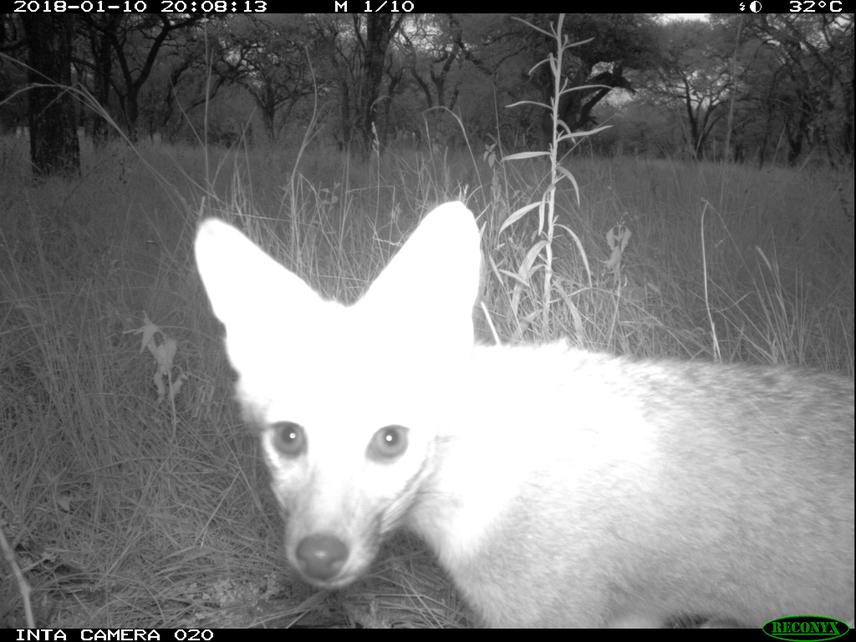Ignacio J. Rojido Nin
Other projects
20 Feb 2017
Linking Biodiversity, Ecosystem Services and Human Well-Being to Conserve Forests at the Frontier of Agricultural Expansion in Argentina
Environmental scientists and managers increasingly recognize that humans are not only drivers of ecological change, but also receive benefits from nature. Consequently, environmental conservation has begun to incorporate socio-cultural values from stakeholders. We will carry out a socio-cultural assessment of the relationships (for example, benefits) that the key actors (ranchers, scientists and administrators) have with the native forest of Entre Ríos Espinal (northeast of Argentina). We expect that this information will contribute to the use and conservation of forests in Entre Rios (e.g., to the application of native forest laws; development of criteria for the National Forest Management Plan with Integrated Livestock).

Zorro gris (Pseudalopex gymno-cercus) registrado mediante cámara-trampa en Dpto La Paz durante enero de 2018.
The relationships that different social actors have with ecosystems and theirs service are heterogeneous (Bennett et al. 2015), depending upon many social (e.g., age, profession, social group) and ecological factors (e.g., species assemblage, ecosystem condition; Scholte et al. 2015). The concept of nature’s contributions to people (NCP) is a novel proposal attempting to supersede the traditional emphasis on ecosystem services, precisely by incorporating these plural values (Diaz et al. 2018).
In Argentina, the case of Entre Rios Province’s native forests illustrates how specific stakeholders, like ranchers, exercise the greatest influence on these ecosystems, and their relationship to it in terms of uses and management also affects their well-being. This stakeholder is actually a heterogeneous group of people (Engler et al. 2008), according to the size of their property, their place of residence, their activities, among others characteristics. Therefore, their specific relationships with the native forest and the ways they manage it should be different, specifically concerning expectations of conservation and its links to their livelihoods.
Activities
Social research: During 2019, we will conduct quantitative surveys, using the results of the qualitative, in-depth interviews conducted during the 1st Rufford award. These will be used to elaborate a series of questions that permit us to quantify, rather than merel describe, the relationships of stakeholders with nature and how they perceive it to benefit them, using the conceptual model of Scholte et al. (2015).
Outreach material: we will develop dissemination material (e.g., posters, brochures), which synthesize the most relevant aspects of the research. This aspect is fundamental for the scientific information that is generated to reach different social actors, and not only the academic or governmental spheres. Meeting with stakeholders: We will do at least one formal session to continue disseminating the results on ecological and social aspects obtained during the 1st Rufford project.
Meeting with agro-technical schools: We will hold meetings in agro-technical schools, in which we will evaluate the effects of the educational module on native forest developed during the 1st Rufford project. For this, after the development of the educational module, we will carry out synthetic evaluations to analyse if the proposed objectives have been achieved.
We expect that this project will contribute to the use and conservation of forests in Entre Rios (e.g., to the application of provincial and national native forest laws) and the development of criteria for the National Forest Management Plan with Integrated Livestock (PNMBGI).